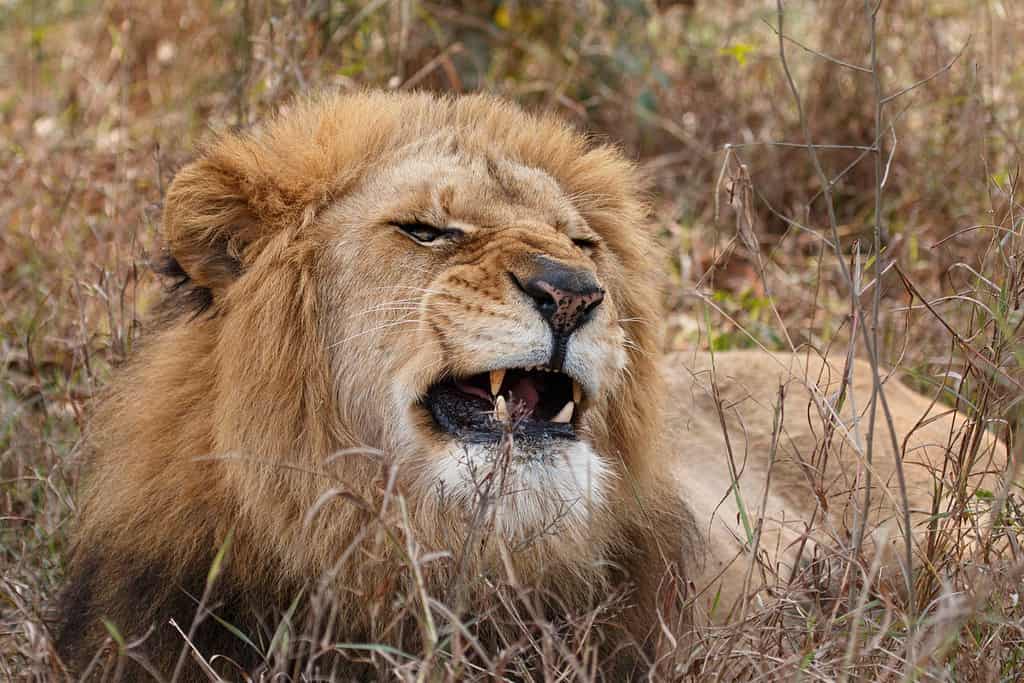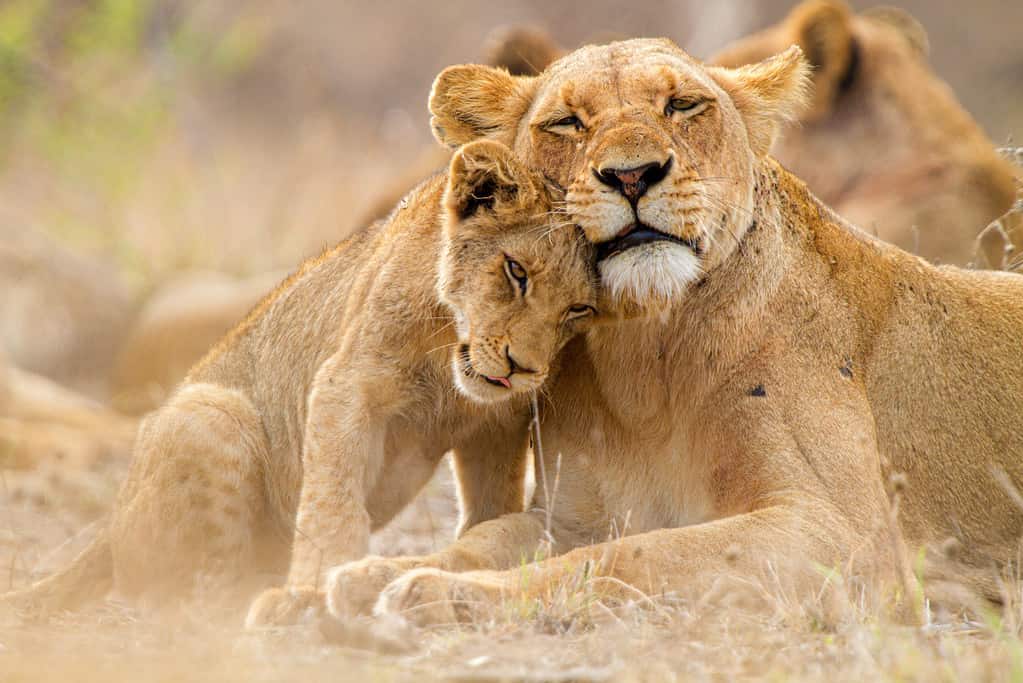Lions are some of the most impressive animals in the world. Known as one of the “big five” they are powerful predators that roam the African landscape, living and hunting in prides. However, the very existence of these stunning animals is at risk as they face several serious threats. So, considering this, are lions endangered? Keep reading to find out!
Where Do Lions Live?
Lions are big cats that live primarily in Africa, although there’s also a small population in the Gir National Park in India. Within Africa, lions live mainly in the sub-Saharan region, where they inhabit grasslands, savannahs, and scrubland.
Lions live in prides, which can consist of anything from three or four lions up to 40. All of the females within the pride are related, but there are also usually a few adult males as well as all of the cubs. The dominant male is typically the leader of the pride, although fights may sometimes break out when a younger male attempts to take over. The females are fairly social animals, and they will often share the responsibilities of raising the cubs.
Lions are most active during the night and spend much of the day resting out of the heat of the sun. However, they may also be active at dawn and dusk. Hunting is most often carried out during the night, and prey consists of a variety of animals — such as zebra, impala, wildebeest, and gazelle.
How Many Lions Are There in the World?

There are no more than 25,000 lions left today.
©Gray Aletter/Shutterstock.com
There are only 20,000 to 25,000 of them left in the world right now. Although lions are currently classified as a Vulnerable species on the IUCN Red List, the stark truth is that the population is dwindling at an alarming rate. It is estimated that 100 years ago there were around 200,000 lions, meaning that the vast majority of these stunning animals have completely disappeared.
Although these figures are alarming enough, it’s also important to understand that the population of lions in many regions is actually considered to be critically endangered because there is a very real risk of them dying out completely. Lions formerly had a much wider range but now exist in only a fraction of the area that they once did.
What Threats Do Lions Face?
Lions face several threats today which are contributing to the decline in their population. These threats include poaching, habitat loss, and conflict with local people.
Hunting
One of the biggest threats that lions face is hunting. Lions are often killed by poachers who take body parts for things such as traditional medicine. However, lions are also killed for sport by people who seek them as trophies. Although trophy hunting raises serious ethical questions, it is actually legal in some areas, despite conservation efforts to stop it.
Habitat Loss

Habitat loss is one of the biggest threats facing lions.
©Israr/Shutterstock.com
Human areas are continually growing, with new settlements and infrastructure being built and agricultural areas expanding, all of which encroach on the natural habitat of lions. Depending on the amount of prey available, the territory of a pride of lions may be up to 100 square miles. As the lion’s range is reduced by the changing landscape, the smaller territory can affect their ability to find food and bring them into closer contact with people. It can also create fragmented populations, which may result in inbreeding and a smaller gene pool.
Loss of Prey Animals
It’s not just the declining populations of the lions that we need to worry about, but the populations of other species — such as wildebeest and zebra — which all have a knock-on effect on the animals that prey on them. Many prey animals are also hunted and their meat is sold. This affects the populations of these species and effectively means that there’s less food available for big cats such as lions. Only 25% of hunts result in a successful kill, although in some areas this may be as low as 15%. Continued failed hunts can eventually lead to starvation or result in lions looking for easier prey, such as livestock.
Human-Animal Conflict
Unfortunately, conflict with humans is another very real threat to lions. A combination of habitat loss, expanding human settlements, and a loss of prey animals often forces lions into closer proximity to people. Sometimes the lions are preying on livestock, or sometimes they may wander too close to a village or threaten someone, but often the lions end up being shot and killed as a result. Sadly, even when the lions aren’t actively doing anything wrong, they may be killed as a preventative measure.
Conservation Efforts

Conservation efforts are underway to try to save the lions.
©Thomas Retterath/iStock via Getty Images
Although lions are under serious threat, there are steps being taken to try to help them survive. Organizations such as the World Wildlife Fund (WWF) are working with local communities to reduce the risk of human-wildlife conflict. This involves erecting strong enclosures for livestock to prevent the lions from preying on them.
Other work being undertaken includes placing tracking collars on lions so that the location of prides can be monitored and locals can be warned if lions stray too close to human areas.
Furthermore, organizations are also constantly trying to prevent poaching and stop illegal trade, including that of lions taken alive for pets or exhibitions. It also involves establishing safe and protected areas for lions where they can thrive.
The photo featured at the top of this post is © Howard Darby/Shutterstock.com
Thank you for reading! Have some feedback for us? Contact the AZ Animals editorial team.






